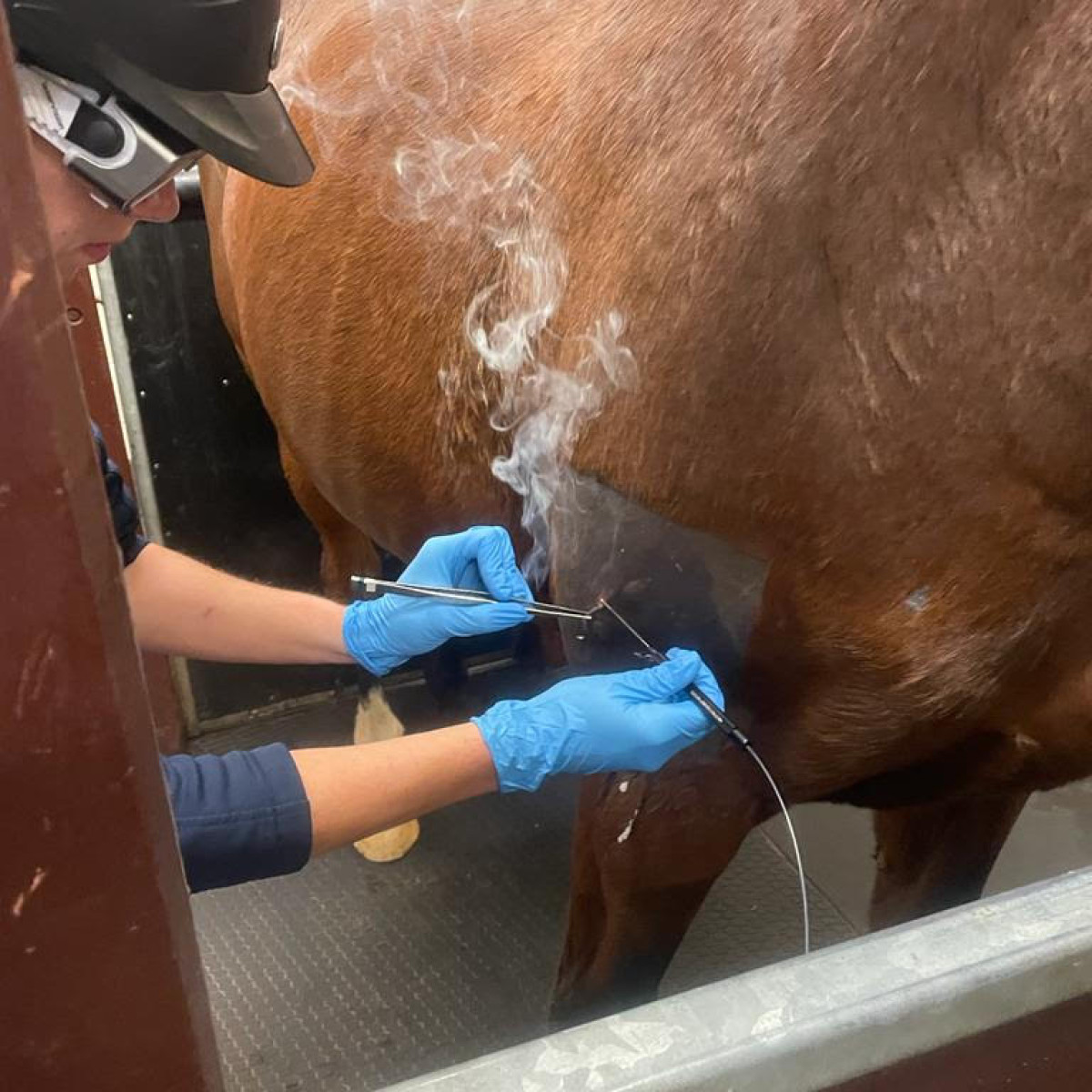Equine Therapy for Children: Psychological and Behavioral Assistance Discussed
Equine Therapy for Children: Psychological and Behavioral Assistance Discussed
Blog Article
Exactly How Laser Therapy in Equine Treatment Is Reinventing Vet Look After Steeds
Laser treatment has actually emerged as a transformative approach in equine veterinary care, offering a non-invasive option that speeds up healing and boosts total health. The mobility and versatility of laser treatment tools even more underscore their expanding necessity amongst vets.
Comprehending Laser Therapy

The modern technology behind laser treatment is grounded in the principle of photochemistry, where photons are soaked up by chromophores within cells, resulting in increased ATP production and modulation of responsive oxygen types (Equine Therapy). This, subsequently, advertises cellular spreading, lowers inflammation, and increases recovery. Vet professionals make use of different sorts of lasers, including low-level lasers (LLLT) and high-power Course IV lasers, depending on the certain healing purposes and the nature of the equine problem being treated
Different laser wavelengths and power settings are carefully picked to target various cells midsts and attain preferred medical results. Safety procedures are paramount, as improper usage can cause thermal damage or suboptimal therapeutic impacts. Hence, a thorough understanding of laser therapy's mechanisms and applications is important for its efficient execution in equine veterinary technique.
Benefits for Equine Health And Wellness
The myriad benefits of laser treatment for equine health encompass improved recovery, pain reduction, and boosted mobility. This advanced therapy modality leverages details wavelengths of light to penetrate tissues, promoting cellular function and promoting quick tissue fixing. The non-invasive nature of laser treatment makes sure minimal tension and discomfort for the steed, facilitating a smoother recuperation process.
Boosted healing is among the primary benefits, as laser therapy speeds up cellular regrowth and collagen synthesis. This results in quicker recuperation times from injuries and medical treatments. Discomfort decrease is achieved through the anti-inflammatory effects of laser therapy, which reduces swelling and reduces the manufacturing of pain-inducing chemicals. As a result, equines experience considerable remedy for chronic and sharp pain problems.
By reducing inflammation and discomfort, and boosting tissue repair work, laser therapy aids in restoring joint feature and muscle versatility. Thus, laser therapy stands as a transformative device in contemporary equine vet care.
Typical Conditions Treated
Laser treatment has become a functional treatment alternative for a selection of common equine conditions. Amongst these, bone and joint injuries are particularly responsive to laser treatment. Equine Therapy. Soft cells injuries, such as tendonitis and ligament strains, advantage from the anti-inflammatory and analgesic results of laser treatments, which accelerate healing and minimize discomfort. In addition, laser treatment is efficient for problems like osteoarthritis, where it aids alleviate joint inflammation and advertise tissue fixing.
Wound administration is another location where laser therapy has actually shown significant pledge. Chronic wounds or slow-healing abscess can be particularly tough in equines, but laser treatment improves cellular regeneration and improves blood flow, thus expediting the recovery procedure. you can try this out Moreover, laser treatments have been efficiently utilized in taking care of unguis conditions such as laminitis and abscesses, reducing pain and advertising faster recovery.

Technology Behind Laser Therapy
Past the myriad problems treatable with laser treatment, the innovation itself qualities better examination. At the heart of laser Resources therapy is the use of specific wavelengths of light to penetrate cells and evoke organic actions. These wavelengths, commonly varying from 600 to 1000 nanometers, are precisely soaked up by chromophores in the skin, muscular tissue, and other tissues, prompting a waterfall of cellular occasions.
Laser tools utilized in veterinary medication commonly use low-level laser therapy (LLLT) or cool laser therapy. Unlike high-powered surgical lasers, these tools operate at reduced energy levels, maximizing restorative benefits while minimizing thermal damages. The energy from the laser light promotes adenosine triphosphate (ATP) production, boosts cellular metabolism, and accelerates cells repair service processes.

Success Stories and Study

Showcasing the tangible benefits of laser therapy, many success tales and study illuminate its transformative effect on equine health and wellness. One such instance involves a pureblooded racehorse struggling with persistent tendonitis. Conventional therapies yielded very little improvement, however after integrating laser therapy into the program, the equine displayed considerable reductions in inflammation and discomfort within weeks, ultimately going back to affordable auto racing.
One more compelling example includes a dressage steed detected with serious neck and back pain, limiting its performance. A vet group used low-level laser treatment (LLLT) to target the inflamed areas, resulting in significant enhancement in versatility and a significant reduction in discomfort. Over numerous sessions, the equine restored its peak form, showcasing the see efficiency of laser treatment in attending to musculoskeletal problems.
Furthermore, a study conducted at a leading equine facility examined 50 steeds with various soft cells injuries treated with laser treatment. The results stood out: 85% of the equines showed sped up healing times and boosted wheelchair. These cases emphasize the adaptability and effectiveness of laser treatment in equine medicine, supplying a non-invasive, scientifically-backed technique to enhancing healing and performance in equines.
Conclusion
Laser treatment is revolutionizing equine vet care by supplying a non-invasive treatment that speeds up recovery, decreases swelling, and eases pain. With its performance in treating an array of conditions, from bone and joint injuries to chronic conditions like osteoarthritis, this innovation considerably improves equine health and wheelchair. The transportability and adaptability of laser treatment better underscore its transformative influence on vet practices, strengthening its duty as a vital device in modern equine health care.
Report this page